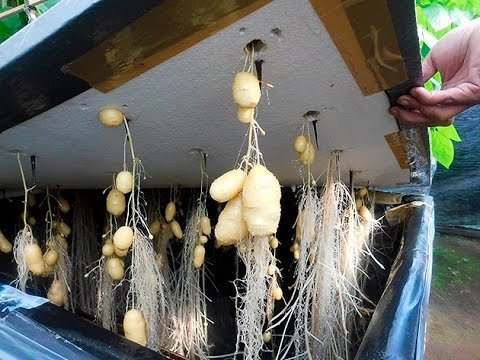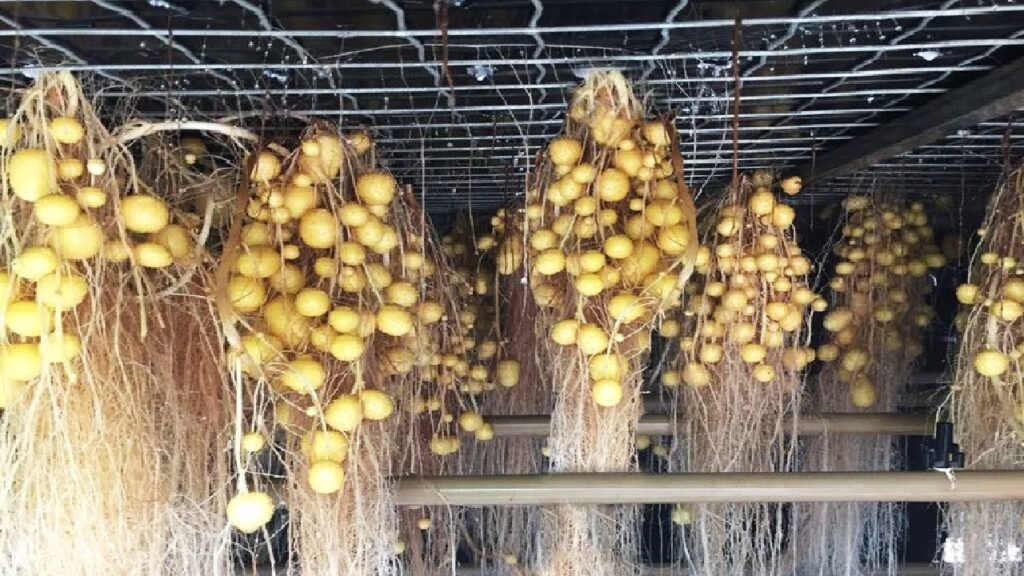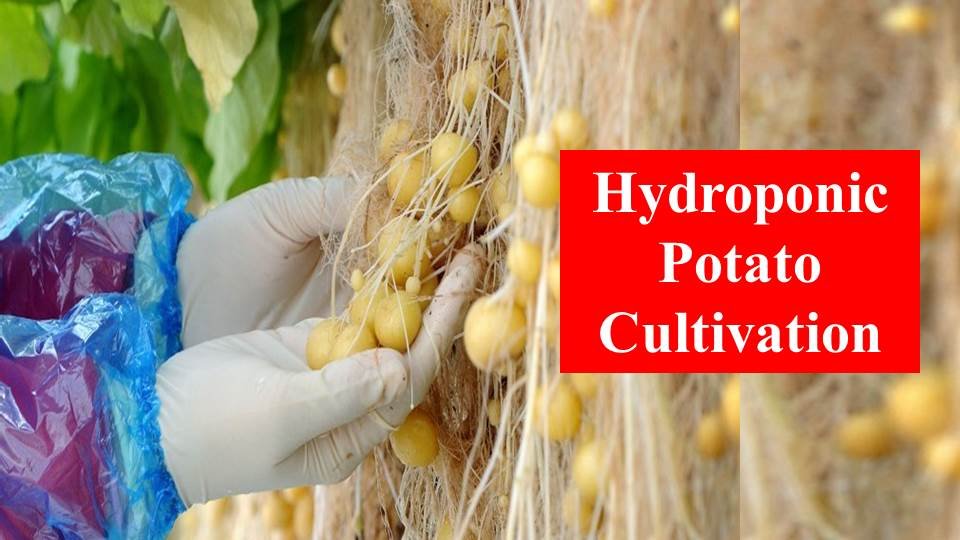How To Grow Potatoes Hydroponically?
How To Grow Potatoes Hydroponically?- When we think about hydroponics, potato is not the first crop that people usually opt for. It’s because of the fact that potato is a crop that requires a lot of ground space as the economical part of the plant is under the ground.
When we think about hydroponics, we usually imagine plants submerged in a water or nutrient solution and potato is not exactly the first crop that comes to our mind. And it’s a fact that agripreneurs don’t go for potatoes either. It’s well known that potato is a crop that requires a lot of ground space as the economical part of the plant is under the ground.
And another major concern of the farmers is the planting material, potato being a moisture-sensitive crop requires high moisture content during its growth, but letting it grow in water might lead to the rotting of the tubers. So how to make all this work for the farmers?
In this blog, we delve into the world of potatoes -their growth habit, varieties, media, and other requirements for growing potatoes hydroponically.
Is Hydroponic Potato Cultivation Possible?
Yes, growing hydroponic potatoes is possible for both home gardens and on a commercial scale. There are just a few modifications to the original or natural method of cultivation in soil. These changes though minute have a huge impact on the plant especially in its growth and yield. Even though potatoes require certain climatic conditions for their growth, they can be grown all around the year with a comparatively high yield than that of the conventional method.

Changes In The Production Of Potato:
The changes are as follows:
- Instead of soil, we shift to growth media. Potatoes are borne under the soil and hence they require support for their proper tuber development.
- Fertilizers and micronutrients are mixed in water and supplied to plants as a nutrient solution. This allows the crop to easily take up the nutrients supplied, as their roots are not tightly wound to the growing medium.
The Requirements Of Hydroponic Potatoes
| FACTORS | CONDITIONS REQUIRED |
| Growing medium | Loose with good aeration. Ex: Peat, Perlite, Vermiculite, etc. |
| Water | Requires more amount of water. The water has to be slightly acidic with a pH of 5.8 – 6.2. |
| Nutrient solution | 20:20:20 of NPK till the beginning of tuber formation and then shift to 10:10:20 NPK as potatoes are high potash feeders, especially during the tuber formation time. |
| Photoperiod | 6 hours of minimum sunlight (or) 14-16 hours of broad-spectrum light such as LED light if there’s not sufficient sunlight. |
| Temperature | The plant usually requires a temperature of 65 – 75 ºF (or) around 18 – 20 ºC. |
| Pruning | Potato does require pruning, hence pruning should be avoided at all cost. |
Varieties Suitable For Hydroponic Potato Cultivation
Not all varieties of potato can be grown hydroponically as a variety or cultivar may not respond well to the conditions provided. After a lot of experiments, the potato varieties and cultivars that respond well to the hydroponic system were cultivated commercially.
A few of those varieties or cultivars are given below:
- · Yukon gold
- Casablanca
- Accent
- Red Pontiac
- Gold rush
And the cultivars from India are released from Central Potato Research Institute, Shimla. Its an institute under the Indian Council of Agricultural Research (ICAR- CPRI). These varieties are suitable for hydroponics in India. The varieties are:
- Kufri Sindhuri
- Kufri Surya
- Kufri Chandramukhi
Steps Involve in Hydroponic Potato Cultivation
The procedures to be followed after getting the supplies for the cultivation of potatoes hydroponically are:

STEP 1: Setting up a support system for the tubers:
Potatoes grown hydroponically require support for proper tuber development, especially during the initial stages of growth. The aggregate method is the best one for potatoes. Other common methods of support provided are:
- Nutrient film technique
- Drip hydroponic system
- Deep water system
STEP 2: Selection of suitable growing medium:
For growing potatoes, the most common growth media used are Peat, Perlite, and Vermiculite. But these media are expensive and a few passive methods can be used to reduce this cost. The passive methods are:
- Pot in-pot method
- Paper towel method
- Perforated tray method
- Wrap in newspaper
- Suspended pot method
STEP 3:Treatment of the tubers before sowing:
- Potatoes usually do not require a lot of pre-sowing treatment.
- It should be cut into small pieces before sowing, each piece should have at least one eye per piece.
- Potato tubers may have Apical bud dormancy (inability to sprout under favorable conditions). The dormancy is usually broken automatically after a period of maturation. And for commercial cultivation of potatoes, it is advised to treat the tubers with gibberellic acid. The commercial forms of gibberellic acid are GA1, GA2, and GA3. GA3 is the most widely used form.
- It is mainly done to increase the sprouting of tubers.
STEP 4: Planting of tubers:
When the tubers start to sprout, it is sown in the bed for further growth. the tubers should not be sown too deep, only with a depth of 1 inch and a spacing of 4-6 cm between two tubers,
STEP 5: Control and Management of the hydroponic system
These plants require a specific set of conditions for growth and care should be taken to maintain the system at these conditions for good development and yield of potatoes. The factors that have to be checked regularly are:
- The amount of water supplied should be monitored thoroughly, as an increase in the amount of water supplied results in the rotting of tubers, and alternatively, a decrease in the water supplied results in small-sized or malformed tubers.
- Daily check the other conditions such as
- Relative Humidity
- the pH of the water
- The electric conductivity of the nutrient solution
- The temperature of the setup
STEP 6: Harvesting of the potatoes
Potato crop cultivated in the soil is usually ready for harvest from 80-120 days, but those grown hydroponically mature early and can be harvested from 70-90 days after planting and it varies with varieties.
Advantages of Growing Hydroponic Potatoes
- The crop can be harvested all year round.
- The yield is also high compared to soil cultivation.
- The pest and disease attack incidence is also highly reduced.
Disadvantages of Growing Hydroponic Potatoes
- Potato requires a larger bed, water, nutrients, and light than other crops. This is because we have to give suitable support to the root.
- The high initial cost of investment.
- The incidence of waterborne diseases increases.
- High cost of growing media.
Care In Growing of Hydroponic Potatoes
The problems that can be solved by taking proper precautions are as follows:
- The selection of the growth medium is a very important step. The growth medium should support the selected variety.
- The timing should be maintained especially in the application of nutrients to the crop. Any deficiency in the macro and micronutrients results in a drastic reduction in the size of the tubers.
- The power supply to the setup should be regular without any disturbances.
- Maintenance of the system should be the ultimate aim of the farmer.
CONCLUSION
The ongoing dilemma of whether to opt for hydroponic potatoes or not is a big impediment to the advancement of hydroponics. Hydroponic potato cultivation goes down a rocky path to success. But it is more than possible to get profit from this kind of setup, with proper care, maintenance, and a little patience.

